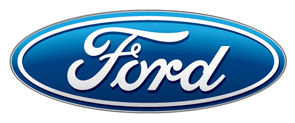Ford to Develop New Mobility Options
 Dearborn, USA - By 2015, two-thirds of the world’s population will be living in urban areas. This will exacerbate already difficult traffic congestion conditions and will present major challenges to basic mobility in cities. Ford Motors is trying to do something about it.
Dearborn, USA - By 2015, two-thirds of the world’s population will be living in urban areas. This will exacerbate already difficult traffic congestion conditions and will present major challenges to basic mobility in cities. Ford Motors is trying to do something about it.“Ford Urban Mobility Networks” is a pilot program to explore how better to coordinate a variety of transportation options and to provide vital real-time information to individuals living in densely populated urban centers. The program is the result of Ford’s ongoing collaboration with University of Michigan’s Sustainable Mobility and Accessibility Research and Transformation (SMART) initiative.
Ford Motor Company will be working with researchers, academia, and public and private companies to develop long-term strategies to confront growing transportation and personal mobility challenges in large and increasingly congested metropolitan areas.
“Even as we reckon with the near-term realities of record oil prices and tough economic conditions, as a company we must also have the courage to address today the long-term business challenges that we know await us,” said Bill Ford, Ford Motor Company’s executive chairman. “This means understanding how personal mobility will evolve in a future where rapid population growth is going to create more congestion and emissions than we as a society can sustain.”
Though the company’s sustainability strategy focuses on short-, mid- and long-term product actions aimed at increasing fuel economy and reducing CO² emissions, the mobility initiative encompasses a wider view of what transportation will look like in the not-too-distant future. By observing urban mobility trends in regions of the world faced with serious congestion and pollution challenges, Ford and U-M have developed a viable and affordable alternative to present transportation modes.
By 2015 experts predict that at least 35 cities will have a population of more than 10 million. In these so-called “megacities,” as well as in smaller cities that are proliferating worldwide, traffic congestion is expected to grow and access to personal mobility will become constrained. In many cities, rising birth rates and rural-to-urban migration patterns already are leading to infrastructure stresses, congestion and pollution.
The “Ford Urban Mobility Networks” program is designed to efficiently connect individuals to a variety of transportation options - buses, trains, taxis, car-share fleets, mopeds and bicycles - in urban areas where population growth is beginning to affect access to affordable personal mobility. These transportation options are available through a transfer point or ‘hub’ where various modes of transportation and services come together.
The hubs can be simple places where two modes of transport meet or they can be elaborate with many transport modes, along with services offering commuters information on entertainment, recreation, dining, banking, commerce, community services and more. The network of hubs is enhanced by information technology that provides real-time travel and schedule information, either at kiosks or through a personal communication device such as a mobile phone. A network of hubs throughout a city is connected to provide commuters convenient, safe and affordable trips.
“Because we view Ford’s core business to be mobility, we will be active in helping major cities address their future transportation challenges,” said Sue Cischke, Ford group vice president. “We see an opportunity for us to create value for our stakeholders by applying our expertise in vehicle engineering and fleet management; logistics and business planning to their mobility challenges.”
The first cities chosen to pilot “Ford Urban Mobility Networks” - Cape Town, South Africa, and Chennai and Bangalore, India - seek to offset these emerging infrastructure stresses by providing alternatives to personal vehicle ownership that reduce vehicle miles traveled and CO² emissions as well as increase the utilization of public transportation and non-motorized options. Ford plans to take the lessons learned from the test cities and apply them to other urban areas around the world.
“Ford redefined personal mobility in the 20th century,” Bill Ford said. “Through our work with urban mobility networks, we hope to influence what personal mobility will mean in the 21st century.”
Already, many cities are using curbs, such as vehicle usage gas taxes and limits on traffic in city centers, to reduce congestion and CO² emissions that come with rapid population growth. It has become clear to Ford and its partners that some day commuters may be forced to leave their personal transportation at home or pay a penalty to travel by car into an overpopulated urban area.
“We think automakers have a great opportunity here to participate and lead,” said Susan Zielinski, managing director, SMART at U-M. “It is through this kind of collaboration across business sectors involved in the new mobility industry, along with government, academia and community stakeholders that we can develop and apply innovative solutions that will not only alleviate some of the congestion and pollution in our increasingly urbanized world, but will also provide major new markets in the emerging new mobility economy”.
You can return to the main Market News page, or press the Back button on your browser.

